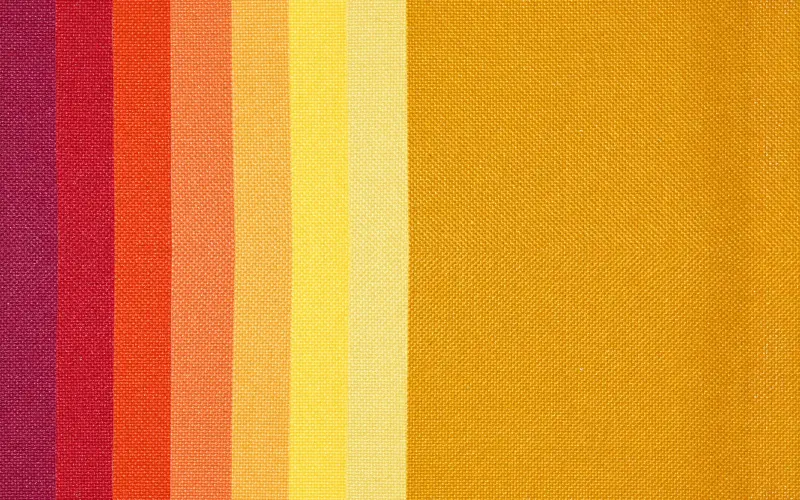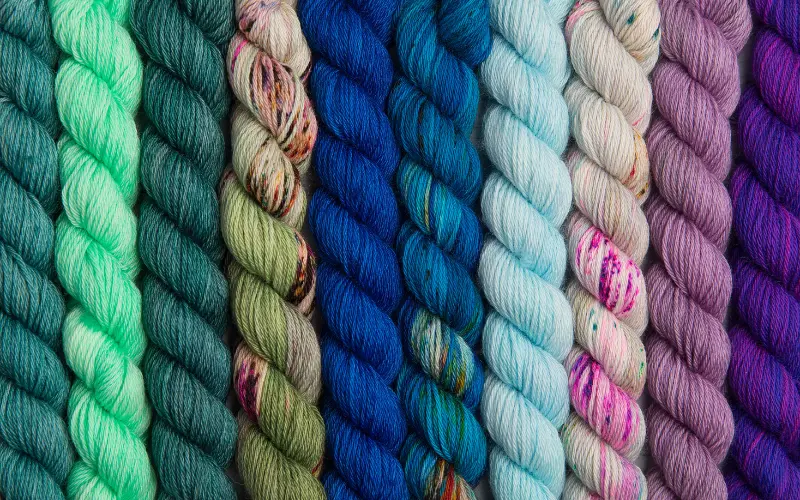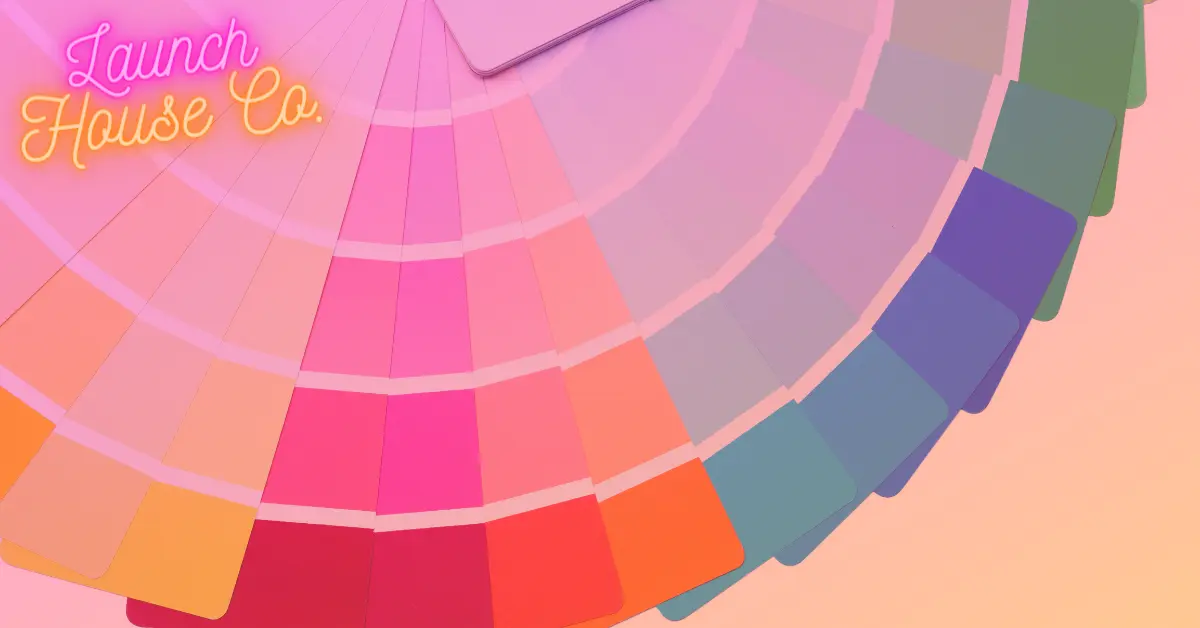As an entrepreneur, you know how important it is to make a lasting impression on your target audience. One of the most powerful ways to do this is through your brand’s colors. Color psychology studies how different colors impact human emotions and behavior.
By understanding the principles of color psychology in branding and web design for business, you can strategically select colors for your branding and website design that evoke your audience’s desired emotions and perceptions.
Understanding the Basics of Color Psychology
The colors you choose for your brand and website can significantly impact how people perceive your business. Colors are often associated with different emotions and can affect mood, behavior, and decision-making.
For example, blue is often associated with trust, while red is associated with excitement and urgency. Understanding the basics of color psychology in branding and web design for business can help you choose colors that align with your brand’s values and messaging.

Warm colors
Warm colors like red, orange, and yellow are associated with energy, excitement, and enthusiasm. They can create a sense of urgency and can be used to draw attention to specific elements on a website or in branding.
When it comes to warm colors, red can be a mighty color in terms of evoking strong emotions, as it has been shown to increase heart rate and stimulate appetite. Orange is often associated with a sense of urgency and can be used to create a call to action. At the same time, yellow can convey optimism and cheerfulness in color psychology in branding and web design for business.

Cool colors
Cool colors like blue, green, and purple are associated with calmness, tranquility, and relaxation. They can create a sense of serenity or evoke trust and reliability.
Blue is often used to create a sense of trust and reliability, making it a popular choice for financial institutions and healthcare companies. Green is associated with nature and growth, making it a popular choice for brands focused on sustainability or health products. On the other hand, purple is often associated with luxury and royalty in color psychology in branding and web design for business.

Neutral colors
Neutral colors such as black, white, and gray are often used as a background or base color. However, they can be paired with bold colors to create a sense of balance or used for a minimalist look.
Black conveys sophistication and luxury, while white can create a sense of purity and simplicity. Gray is often associated with professionalism and formality in color psychology in branding and web design for business.
Cultural associations
It’s important to remember that cultural associations can also impact color perception. For example, red is associated with good luck and prosperity in Chinese culture. In contrast, Western culture often associates it with danger or warning. Likewise, in some cultures, white symbolizes mourning, while in others, it symbolizes purity and innocence.
When choosing a color scheme, it’s essential to consider the target audience and cultural context to ensure that the chosen colors are interpreted in the desired way. Being aware of color psychology in branding and web design for business helps with this!
By understanding the basics of color psychology in branding and web design for business and the emotional and psychological responses that colors elicit, entrepreneurs can make more informed decisions about the colors they use in their branding and website design.

Choosing the Right Color Scheme
Choosing the right color scheme for your brand and website is essential. Your color scheme should reflect your brand’s personality and values while also evoking the desired emotions in your audience. Consider the colors associated with your industry and the feelings you want to convey. For example, a health and wellness brand may use green to represent health and vitality with color psychology in branding and web design for business.
Consider your brand personality
Think about the emotions and characteristics you want your brand to convey. For example, you want to create a brand associated with trust and reliability. In that case, you may choose blue as your primary color in color psychology in branding and web design for business. On the other hand, if you create a playful and energetic brand, you may choose bright and bold colors like yellow or orange.
Understand color meanings
Each color has different meanings and connotations with color psychology in branding and web design for business. For example, red is associated with excitement, passion, and urgency, while green is associated with growth, nature, and health. Make sure to research the meanings of different colors and choose colors that align with your brand messaging.

Consider color harmony
Your chosen colors should work well together and create a harmonious look. There are several color harmonies, including complementary, analogous, and monochromatic. Complementary colors are opposite on the color wheel and create a high-contrast look. In contrast, analogous colors are next to each other on the color wheel, creating a more subtle and cohesive look. And follow color psychology in branding and web design for business!
Think about accessibility
It’s essential to choose colors accessible to all users, including those with color vision deficiencies. Avoid using color alone to convey critical information; ensure enough contrast between text and background colors.
Following these tips, you can choose a color scheme that effectively represents your brand and resonates with your target audience. And follow color psychology in branding and web design for business!
Selecting Colors for Your Brand Elements
Once you’ve chosen your color scheme, it’s time to select colors for your brand elements, such as your logo, website, and marketing materials. Your logo should be the foundation of your color scheme, and the other components should complement it. Use colors consistently across all your brand elements to create a cohesive and memorable brand identity.
Choose colors that align with your brand values
Consider using bold and vibrant colors if your values center around innovation and creativity. Consider muted and softer colors if your brand values center on calmness and tranquility in color psychology in branding and web design for business.

Consider the industry and audience
Different industries and audiences may have specific color associations or preferences. For example, blue is often associated with trust and reliability, making it a popular choice for financial institutions. On the other hand, pink is often associated with femininity and is commonly used in the beauty and fashion industries.
Here are other commonly associated colors for different industries with color psychology in branding and web design for business:
- Technology: blue, gray, white
- Healthcare: blue, green, red
- Finance: green, blue, gold
- Food: red, yellow, orange
- Beauty and cosmetics: pink, purple, black
- Environmental: green, blue, brown
However, it’s important to note that these are not set in stone and can vary based on the specific brand and target audience. Conducting thorough research and testing to determine the most effective color scheme for your brand and industry is always a good idea. Color psychology in branding and web design for business is a great starting point.
Please keep it simple
While it can be tempting to use various colors to make your brand stand out, keeping your color palette simple and consistent is essential. Stick to a few colors that work well together and use them consistently across all brand elements.
Test your colors
Before finalizing your color scheme, test it with your target audience to see how they perceive it. You can conduct surveys or focus groups to get feedback on your color choices. This ensures that the color psychology in branding and web design for business works for your specific audience and industry.
Remember, the colors you choose for your brand elements can significantly impact how your audience perceives your brand. So take the time to carefully consider your color choices and ensure they align with your brand values and audience preferences. Make sure to follow color psychology in branding and web design for business, however, you always need to test.

The Role of Contrast and Complementary Colors
Contrast and complementary colors play a significant role in branding and website design. Contrast can be used to highlight critical elements and draw attention to calls-to-action. Complementary colors, on the other hand, can create a harmonious and pleasing color palette. Use color psychology in branding and web design for business principles strategically to create a visually appealing and practical design.
Contrast refers to the differences between two colors regarding hue, saturation, or brightness. Complementary colors, on the other hand, are opposite colors on the color wheel and can create a vibrant, eye-catching effect when used together.
Contrast draws the viewer’s eye to that element, making it stand out from the surrounding content. For example, using a bright color like red for a call-to-action button on a predominantly blue website can create a strong contrast that draws the viewer’s attention to the button. Color psychology in branding and web design for business makes this much easier to implement.

Complementary colors can also create a striking effect in your branding and website design. When two complementary colors are used together, they develop a sense of balance and harmony in the design. However, using complementary colors in moderation is essential, as too much contrast can be overwhelming and visually jarring for your audience.
When selecting your color scheme, consider using complementary colors for your main branding elements, such as your logo and website header. You can then use contrasting colors to draw attention to specific elements or calls-to-action on your website.
Understanding the role of contrast and complementary colors in your branding and website design can help you create a visually appealing and engaging design that resonates with your audience.

The Impact of Color on Conversions
Color can significantly impact conversions, such as sign-ups, purchases, and downloads. Therefore, you can increase conversions and drive more business by choosing the right colors for your calls-to-action and other vital elements. Below is some fundamental research completed on this topic to help you make informed decisions about your colors while considering color psychology in branding and web design for business!
Impact of Color in Marketing
This study found that color can influence consumers’ perceptions of brand personality, purchase intent, and perception of quality. Specifically, warm colors like red, orange, and yellow were associated with excitement and passion. In contrast, cool colors like blue, green, and purple were associated with trustworthiness and competence.
The study suggests that understanding the meaning and associations of different colors can help businesses choose colors that align with their brand identity and message. Color psychology in branding and web design for business is essential to understand the foundations.
The Impact of Color on Marketing
This study found that color can influence consumers’ attitudes toward products and brands and that using specific colors can lead to higher purchase intention. For example, the color blue was associated with high quality and reliability. In contrast, red was associated with low prices and excitement.
The study suggests that businesses should consider the emotional associations of different colors and use them strategically in their marketing materials to appeal to their target audience.

Color Psychology: Effects of Perceiving Color on Psychological Functioning in Humans
This study reviews the psychological effects of color on humans, including its impact on mood, cognitive performance, and behavior. The study found that warm colors like red and yellow can increase arousal and attention, while cool colors like blue and green can have a calming effect.
The study suggests that businesses should consider different colors’ emotional and psychological impact on their audience and use them accordingly in their branding and website design.
Color and Shopping Intentions: The Intervening Effect of Price Fairness and Perceived Affect
This study found that color can impact shopping intentions, with warm colors like red and yellow leading to higher intentions to purchase. The study also found that colors can influence consumers’ perception of price fairness, with higher prices being perceived as fairer when presented with warm colors.
The study suggests that businesses should consider the impact of color on their audience’s purchase intentions and use warm colors strategically to increase the likelihood of purchase.
These studies suggest that color can significantly impact consumer behavior, including brand personality perceptions, purchase intent, and even pricing fairness. By understanding the emotional and psychological associations of different colors, businesses can choose colors that align with their brand identity and message and strategically use them in their branding and website design to increase conversions and drive more business.
In conclusion, color psychology in branding and web design for business is a powerful tool for entrepreneurs looking to create a lasting impression on their target audience. By understanding the principles of color psychology in branding and web design for business, you can strategically select colors for your branding and website design that evoke your audience’s desired emotions and perceptions.
To create a consistent and memorable brand identity, download my Brand Guidelines Canva template and read my article “10 Easy Steps to Creating a Brand Style Guide as a Business Owner.”. The article will help you save so much time and ensure you create strategic brand style guidelines with my template!
Sources:
- Impact of Color in Marketing, by S. Hussain, K. Bibi, and M. A. Zia. https://www.emerald.com/insight/content/doi/10.1108/00251740610673332/full/html
- The Impact of Color on Marketing, by A. Labrecque, R. E. Wells, and J. G. Valacich. https://www.jcreview.com/admin/Uploads/Files/61dec3efaa7fa2.91270776.pdf
- Color Psychology: Effects of Perceiving Color on Psychological Functioning in Humans, by A. Elliot, A. Maier, and R. Moller. https://pubmed.ncbi.nlm.nih.gov/23808916/
- Color and Shopping Intentions: The Intervening Effect of Price Fairness and Perceived Affect, by R. Krishna. https://aquila.usm.edu/fac_pubs/3235/
